Hello to all my dear friends, today I share some shots and information about this very common species from our region.
Hola a todos mis queridos amigos, hoy comparto algunas fotos e información sobre esta especie tan común de nuestra región.
Well, these are what I could call "easy to take photos", as this bird is always perched on those old iron bars in the backyard of my house lately.... So it was enough for me to get a little closer with my camera to take some decent pictures. ;-)
Bueno, esto es lo que podría llamar "fotos fáciles de tomar", ya que este pájaro siempre está posado en esas viejas barras de hierro en el patio trasero de mi casa últimamente.... Así que me bastó con acercarme un poco con mi cámara para hacer unas fotos decentes. ;-)
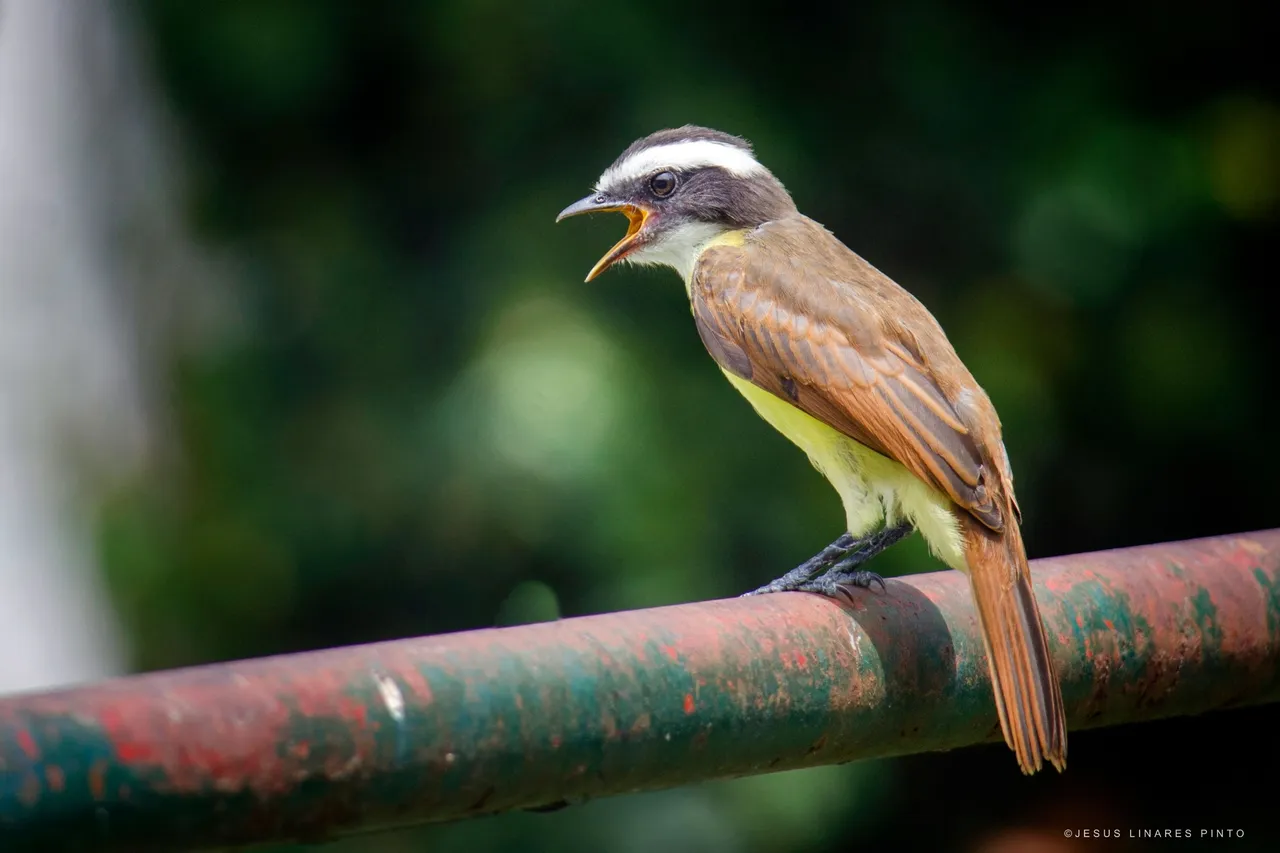
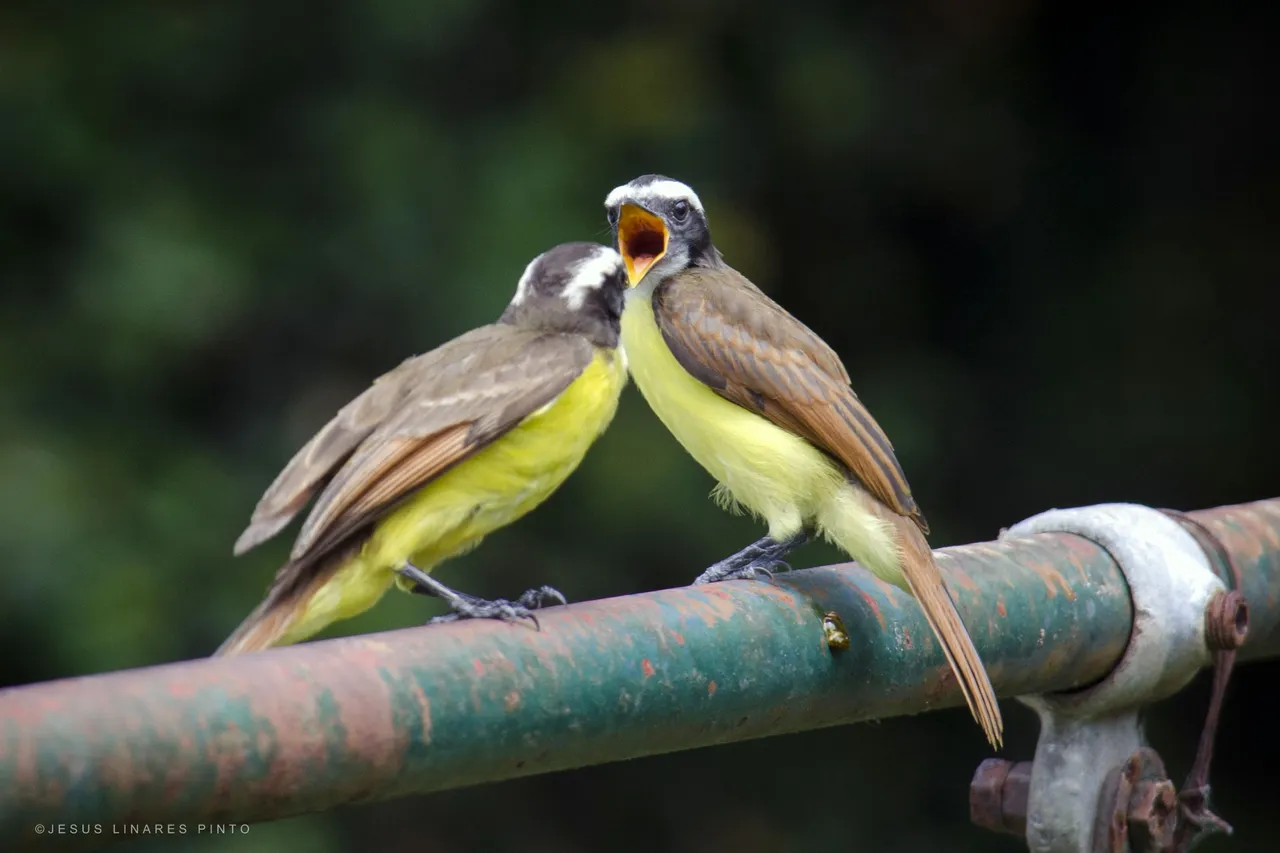
Scientific classification:
Kingdom: Animalia
Phylum: Chordata
Class: Aves
Order: Passeriformes
Family: Tyrannidae
Genus: Pitangus
Species: P. sulphuratus
Binomial name: Pitangus sulphuratus - (Linnaeus, 1766)
Clasificación Científica:
Reino: Animalia
Filo: Chordata
Clase: Aves
Orden: Passeriformes
Familia: Tyrannidae
Subfamilia: Tyranninae
Tribu: Tyrannini
Género: Pitangus
Especie: P. sulphuratus
Nombre Binominal: Pitangus sulphuratus - (Linnaeus, 1766)
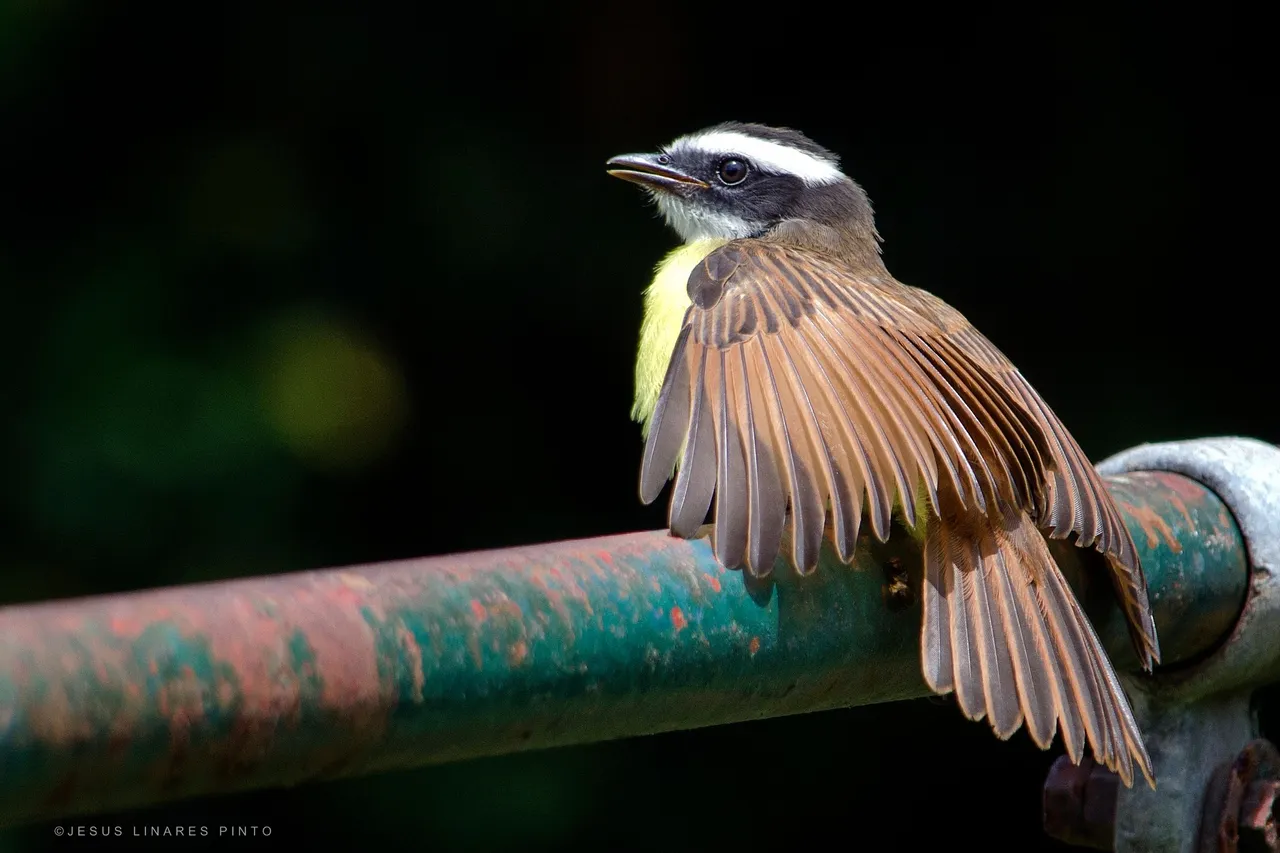
They are brightly coloured and well defined brown, black, yellow and white.
Son de colores vivos y bien definidos: marrón, negro, amarillo y blanco.
They tend to be very bad tempered and quite territorial, even attacking individuals of the same species.
Suelen tener muy mal carácter y son bastante territoriales, llegando a atacar a individuos de su misma especie.
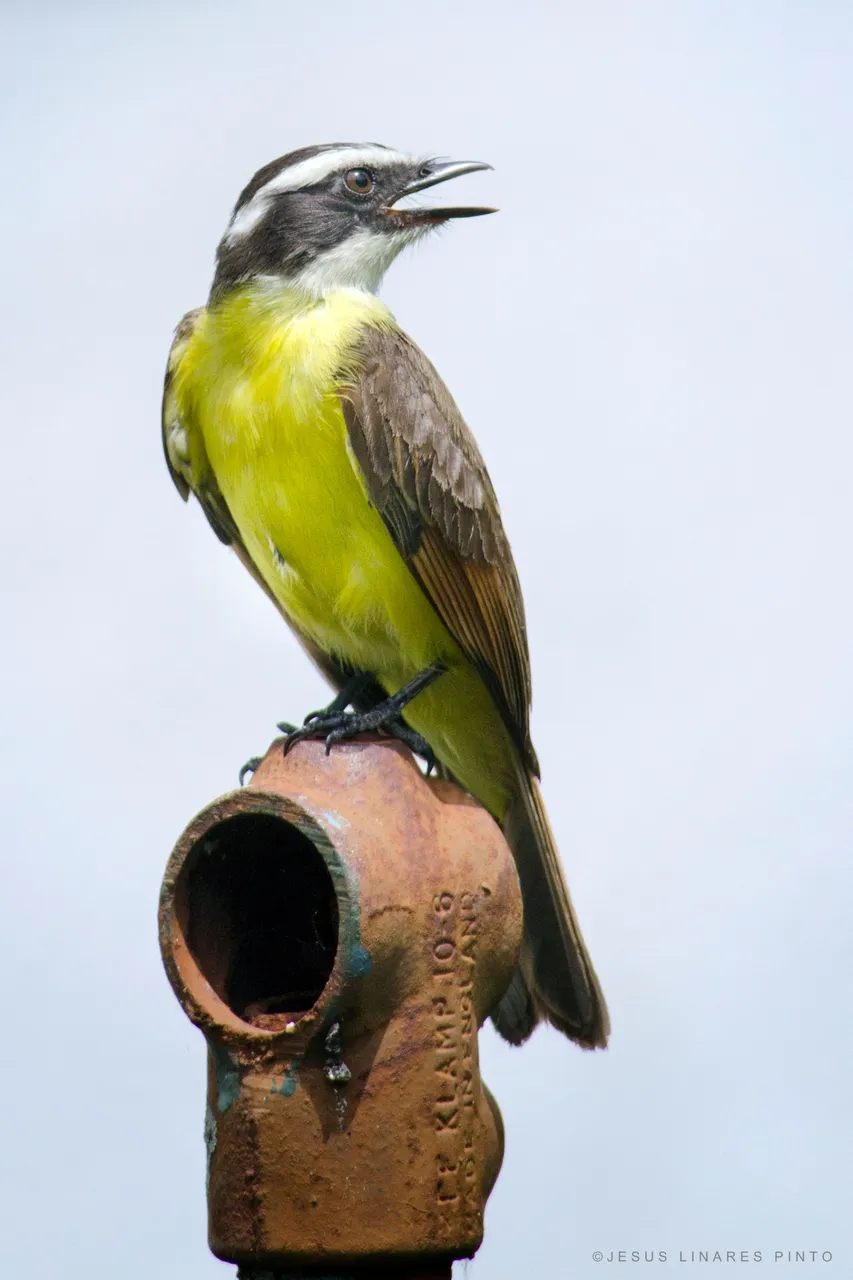
The adult great kiskadee is one of the largest of the tyrant flycatchers. It is 25 to 28 cm (9.8 to 11.0 in) in length and weighs 53 to 71.5 g (1.87 to 2.52 oz). The head is black with a strong white supercilium and a concealed yellow crown stripe. The upperparts are brown, and the wings and tail are brown with usually strong rufous fringes. The bill is short, thick, and black in color.
El ave adulta es uno de los mayores de los papamoscas Tyrannidae. Mide entre 25 y 28 cm de longitud y pesa entre 53 y 71,5 g. La cabeza es negra con una franja balnca y una franja amarilla oculta en la coronilla. Las partes superiores son marrones, y las alas y la cola son marrones con flecos generalmente fuertes de color rufo. El pico es corto, grueso y de color negro.
The call is an exuberant "BEE-TEE-WEE and the bird has an onomatopoeic name in different languages and countries: In Brazil its popular name is bem-te-vi ("I saw you well") and in Spanish-speaking countries it is often bien-te-veo ("I see you well") and sometimes shortened to benteveo. Here in Venezuela it is called "Cristofué" or "Christ did it"... Funny, eh? :-)
El canto es un exuberante "BEE-TEE-WEE y el pájaro tiene un nombre onomatopéyico en diferentes idiomas y países: En Brasil su nombre popular es bem-te-vi ("Bien-te-vi") y en los países de habla hispana suele ser bien-te-veo y a veces se acorta a Benteveo. Aquí en Venezuela se le llama "Cristofué"... Es curioso, ¿eh? :-)
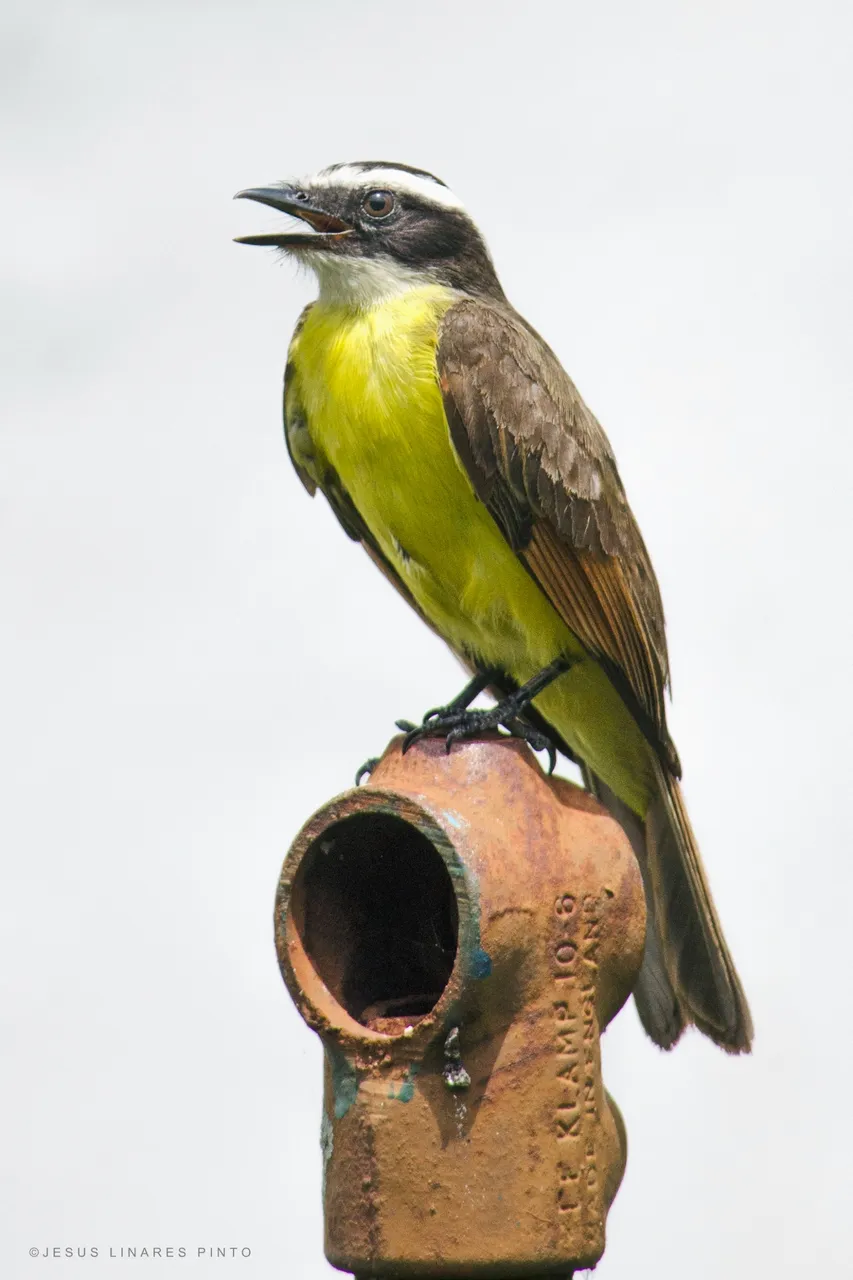
Thank you very much for stopping by and appreciating. Greetings to all.
Muchas gracias por pasar y apreciar. Saludos para todos.
END / FIN
"We make photographs to understand what our lives mean to ourselves." - Ralph Hattersley.
"Hacemos fotografías para comprender lo que nuestras vidas significan para nosotros mismos." - Ralph Hattersley.

Cámara: Nikon D7000 | Objetivo: AF-S DX NIKKOR 55-300mm f/4.5-5.6G
Montalbán, Carabobo, Venezuela.
